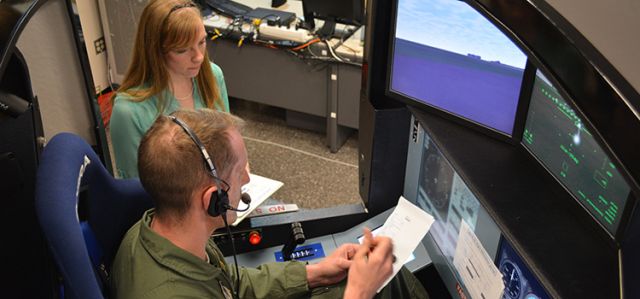Identification of Aircraft by their Unique Turbulent Wake Signature: Progress with Experimental Validation
Document Type
Conference Paper
Publication Date
1-2013
Publication Source
51st AIAA Aerospace Sciences Meeting including the New Horizons Forum and Aerospace Exposition
Abstract
The theoretical foundation for the identification of aircraft by their unique turbulent wake signature is experimentally validated. A brief review of this theoretical foundation will be discussed wherein the drag coefficient can be used to estimate either a Reynolds Stress distribution or [indirectly] a model of the profile of the fluctuating streamwise velocity component of the turbulent wake. Previously the Reynolds stress distributions downstream of a circular cylinder, moderate aspect ratio wing and small remote control twin motor aircraft were determined using Particle Image Velocimetry (PIV) in the University of Dayton low speed wind tunnel (UD-LSWT). Those results were compared to the predicted Reynolds Stress distributions calculated from the drag coefficient obtained through direct force measurement.
The cylindrical results validated the implementation of the method. The wing and aircraft results, however, were inconclusive since the wind tunnel test section was not long enough to guarantee that a self-preserved state had been achieved in the wake. For this paper, a wall-to-wall SD7003 wing profile and an aspect ratio 4 flat plate wing are tested in a much longer test section at the Air Force Research Labs Horizontal Free Surface Water Tunnel (AFRL/HFWT).
The wakes are interrogated in streamwise planes using PIV at distances downstream ranging from 6 to 20 chord lengths. These results are then compared to the predicted Reynolds stress distributions determined from drag data available in the literature and from direct force measurement respectively for the two wing models. When using empirical tuning as a surrogate for a more rigorous determination of turbulence eddy viscosity the predicted Reynolds stress distributions compare extremely well across a wide range of angles of attack and chordwise PIV planes of interrogation (from mid semi-span to the wingtip). Asymmetry is present in the Reynolds Stress distribution and the theoretical model can be adjusted to account for it. The presence of the wingtip vortex does not prevent successful application of the model in the finite wing test.
ISBN/ISSN
978-1-62410-181-6
Copyright
Copyright © 2013, American Institute of Aeronautics and Astronautics
Publisher
American Institute of Aeronautics and Astronautics
Place of Publication
Grapevine, TX
eCommons Citation
Altman, Aaron and Gunasekaran, Sidaard, "Identification of Aircraft by their Unique Turbulent Wake Signature: Progress with Experimental Validation" (2013). Mechanical and Aerospace Engineering Faculty Publications. 113.
https://ecommons.udayton.edu/mee_fac_pub/113
COinS




Comments
Permission documentation is on file.